











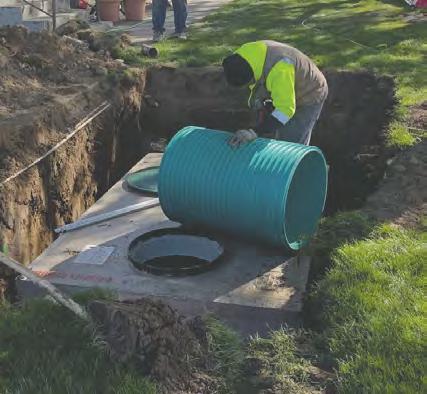



















































By Lucas Holmgren, Active Media
Runs of salmon and steelhead are so widely varied: One component can have blockbuster returns, while others will quietly suffer low numbers and closed fisheries. Over the last decade, many headlines and articles speak of high numbers of returning species like sockeye, but often steelhead are holding on by a thread, forcing closure of popular steelhead fisheries. These runs are cyclical, and we seem to be on the bottom end of the lowest cycle for summer and winter returning steelhead.
The 2023 forecast for returning summer steelhead on the Columbia River was only 67,800 adult fish, but total numbers appear to have strongly exceeded that prediction. With an
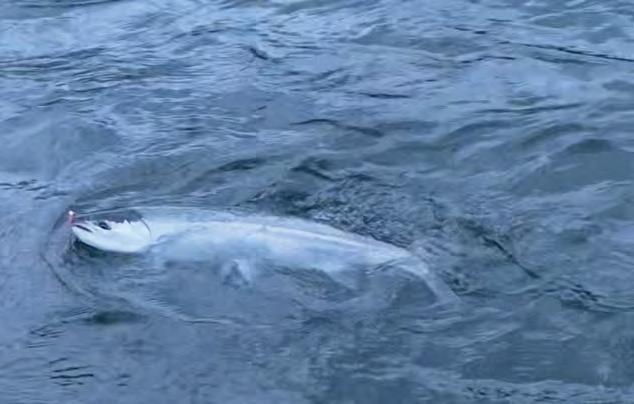
actual 2023 return of 113,891 summer steelhead, they have outperformed expectations. This is a welcome change, as depleted stocks of summer steelhead result in the loss of multiple fisheries all the way up the Columbia River.
The winter numbers of steelhead are difficult to get exact counts on, as they are primarily coastal and can spawn quickly and leave just as fast. Unlike salmon, steelhead usually do not die in their spawning stream, but will make an effort to swim back downstream and out to the ocean.
An overall increase in abundance of steelhead coast-wide indicates better ocean conditions for steelhead. While Chinook and Coho salmon often follow the coastlines, steelhead exit their freshwater rivers and swim solitarily across open ocean, encountering warmer waters and warm water predators.
The 2024 summer steelhead numbers in the Lower Columbia and Upper Columbia gave hope to steelhead enthusiasts, and for some, catches were excellent. In fact, this author’s brother had his best season ever, fishing the Lower Columbia tributaries for hatchery steelhead. “Hooking a steelhead every single trip in May and June, on multiple rivers, was something I never expected to happen.”
The early season was certainly one for the books! The author took several friends out in May to tangle with ultra-fresh and hard-fighting fish. It certainly was never “easy,” so to speak, but effort was rewarded. Populations of winter steelhead show many encouraging signs, including multiple Washington Coastal rivers opening to fishing for the first time in several years.
“All it takes is one,” and my first “winter run” of the season was a wonderful sign, and close to home. Steelheaders, time to dust off the graphite rods and get moving. 2025 has already shown promise, and with research and technique, you’ll have a chance at the fish that makes the Pacific Northwest so special.




Tues - Sat: 10am to 5pm
Sun: 10am to 3pm
2795 Cascade Ave.
Hood River
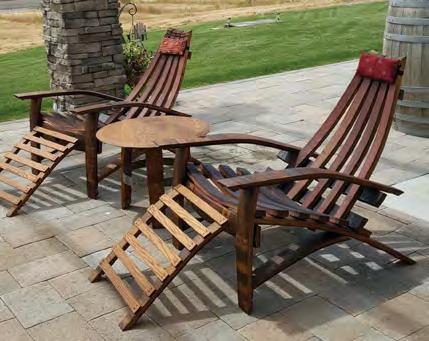


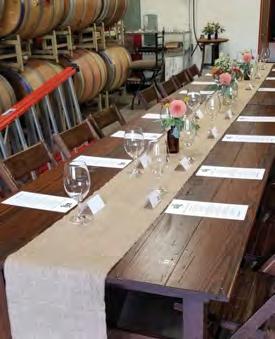



By Patti Jo Brooks, Active Media
by Henry Schifter, Active Media
What do an event, a home and a construction site have in common? Sanitation services! Neal Creek Portable Sanitation supplies the Columbia River Gorge region with full-service sanitation. Owner Paul Jones took over Gorge Portable Sanitation, Inc. last January, renaming it under the Neal Creek brand. Local residents may be familiar with Neal Creek Forest Products that Jones has owned and operated in the area for the last six years. The two businesses have a commonality: both supply needbased services to the area with an overlapping clientele.
“We are the only full-service septic company in the area,” Jones points out. “We do septic installs, septic pumping, porta-potties, luxury restrooms, and 24-hour emergency services.” Operating in Hood River and Wasco County, Neal Creek Portable Sanitation has become the largest septic service business in the Columbia River Gorge. Out of Hood River and The Dalles, they provide sanitation service to commercial, residential and municipal clients.
Local orchardists, landscapers and contractors are among the clients who rely on Neal Creek Portable Sanitation to supply porta-potty services for their laborers. When wildfires
plague the area, Neal Creek Portable Sanitation aids local government by supplying firefighters with restroom facilities at the fire camps. For special occasions and outdoor events, Neal Creek Portable Sanitation provides luxury restrooms: a climate-controlled luxury mobile unit with sinks, private stalls, lighting and mirrors can be brought onsite for your guests’ convenience. So why exactly did a forest products business owner decide to purchase a septic sanitation company? Opportunity, for one! The 20+ year company, known locally as GPSI, sat on a property adjacent to Neal Creek Forest Products. Believing that sanitation services

would fit well with the Neal Creek brand, Jones wanted to offer this additional service to Gorge-area residents who for years had been provided with mulch, firewood, snow removal and bark through Neal Creek Forest Products.
In February, Neal Creek Portable Sanitation purchased Vista Sanitation which held multiple septic contracts throughout the region. Vista’s owner, Wade Kilby, joined Neal Creek Portable Sanitation as COO, bringing with him over 15 years of experience in the sanitation business.
As a 15-year resident of Hood River, Paul Jones, owner of Neal Creek, demonstrates a deep commitment to the local community. Beyond supporting local businesses like Gorge Grown Food Network, local orchardists, as well as contributing to the success of the county fairs, Paul dedicates his time to coaching youth sports and volunteering. Alongside his beautiful wife, Erica Jones and two sons, Paul embodies the spirit of a family invested in the long-term well-being of their hometown.
Neal Creek Portable Sanitation is located at 3295 Neal Creek Mill Rd. in Hood River. Call (541)806-0268 or email info@ nealcreekps.com. For more information visit nealcreekps.com.


By Dennis McNabb, Active Media
It is no exaggeration to say that the Columbia Gorge (and Hood River, in particular) is the premier destination in the continental United States for windsport enthusiasts. Known for its consistent wind patterns, supportive infrastructure, easy accessibility, and thriving windsurfing community, there is no place better to indulge your windsport fantasies, regardless of your experience level. And within that community, there is no place more equipped to get you in the air and on the water than Windance!
Anyone already involved in these activities will be familiar with the name. Windance has been a cornerstone of The Gorge scene since 1983! It has affectionately been considered a place to “hang out” as much as it is a place to gear up. A favorite amongst the locals as well as those who are just getting into it, their vast inventory of both new and used equipment offers many alternatives for those seeking to save money where they can. “We have the largest used selection in town,” owner Nick Caccavo stated, “And that really helps people who are just getting started to pick up some high-quality equipment without breaking the bank.” Since 90% of their used inventory is sold on consignment, they also offer established riders a unique opportunity to clear out the garage, recoup some of their costs, and get the gear into the hands of excited buyers.
Nick is an incredibly knowledgeable and enthusiastic lover of all things related to windsports. He moved to The Gorge in 2008 to be a firefighter and discovered this vibrant community. He himself got his start “hanging out” at Windance and purchasing equipment at one of their swap meets. He fell in love with the people just as much as he fell in love with the various disciplines within the sport, and Windance has been a central pillar of his entire experience. When it came up for sale in 2022, he jumped at the opportunity.
“There was no need to fix what wasn’t broken,” Nick said. “The shop’s character and casual vibe have always drawn

people in and I don’t want that to change.” What he has done is update their in-store technology to better serve customers, especially online. He also recently added Foil Drive Assists to their inventory – a revolutionary new technology that converts Foils into E-Foils. He will continue to focus on strengthening their position at the forefront of the industry’s innovation — offering cutting-edge gear while maintaining continuity with the past. He wants every customer who enters to “feel the magic,” to comprehend that they are visiting the epicenter of an entire sport, and hopefully be inspired to become a part of the Windance legacy.
Nick is eternally grateful for this opportunity and hopes that Windance can continue to be the beating heart of the windsport community for decades to come. Whether you are a salty old pro or a beginner, Windance is the one-stop shopping mecca for all your windsport needs!
For more information, check out their website: windance. com. Better yet, come down to the shop located at 108 Highway 35 in Hood River. Their knowledgeable and enthusiastic staff never fails to inspire!










By Donovan Darling, Active Media
Necco wafers, candy hearts, Sweethearts, conversation hearts. The candy goes by many names, with silly messages and a chalky consistency. The notorious candy hearts have a strange history that harkens back to a Civil War-era pharmacy and America’s first candy machine. The story begins in 1847, with a pharmacist named Oliver Chase, who invented a machine to produce lozenges. Back then, apothecary lozenges were popular for sore throats and other illnesses. But 175+ years ago, the process to make a lozenge was labor-intensive: pulverizing medicine and sugar paste by hand with a mortar and pestle, kneading dough, then rolling and cutting out little discs. Considered the first candy machine, Oliver invented a lozenge cutter to simplify the process and smartly shifted from making medicine to making candy, founding Chase and Company, which later became New England Confectionery Company, or Necco!
Here’s where the story gets really interesting. Legend tells us that Union soldiers during the Civil War carried Necco wafers, known as “hub wafers,” and Oliver Chase might have been inspired by the love letters these soldiers carried. Historians also suggest that perhaps Daniel Chase, Oliver’s brother, was inspired by the growing popularity of Esther Howland’s Valentine’s Day cards which began selling in the mid-1800s. A third and more likely explanation is that the candy wafers were inspired by the oddly named cockle, a popular candy shaped like a scallop seashell which contained a “motto” printed on a thin roll of paper stuffed inside. Daniel may have cleverly improved upon this design, printing the messages directly onto candy by using a felt roller pad wetted with red vegetable coloring.
However, Daniel’s “conversation candies” or “motto lozenges” weren’t heart-shaped until later in 1902. Until that time their candy was sold in a simple disc shape, but eventually they were sold in shapes like baseballs, watches and horseshoes. When the candy hearts were introduced they were hugely successful, and over the next 100 years other smaller companies began selling similar candies. In 1990, Necco acquired Stark Candy Company and became the “leading manufacturer in conversation hearts.” Today, the company claims to manufacture nearly 100,000 pounds of Sweethearts every day and approximately 8 billion candy hearts each year.
But what is a candy heart exactly? Necco offers classic Sweethearts, as well as chocolate, sugar-free, “dazzled,” and “color your own” varieties. According
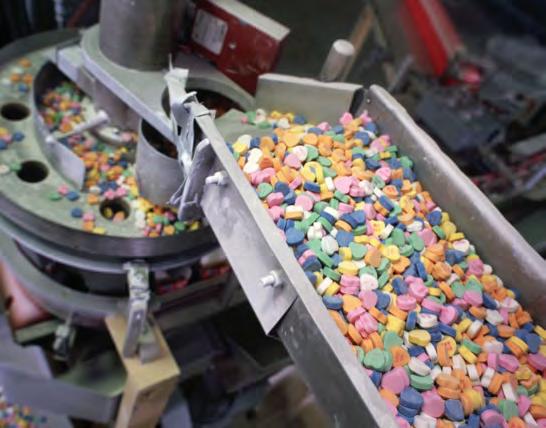
to their website: “Manufacturers combine sugar, corn syrup, cornstarch, flavors, gums and colors into a mixing machine to create a dough, which then goes into a machine that presses it flat, stamps it with sayings and cuts it into hearts. After 30 minutes in a “drying tunnel,” the six different heart flavors are mixed together and packaged.” I guess they’re not made out of chalk!
Daniel Chase’s original printed lozenges were larger and therefore included longer phrases, like “HOW LONG SHALL I HAVE TO WAIT? PLEASE BE CONSIDERATE” and “WHY IS A STYLISH GIRL LIKE YOU A THRIFTY HOUSEKEEPER?” Obviously, times have changed! There were also weddingthemed sayings, such as “MARRIED IN WHITE, YOU HAVE CHOSEN RIGHT,” “MARRIED IN SATIN, LOVE WILL NOT BE LASTING.” Previous sayings like the deeply dated “FAX ME” and “GROOVY” have been discontinued. The more timeless messages like “BE MINE” and “KISS ME” you may be more familiar with. Whatever your feelings on candy hearts, they’re a fun and fascinating little piece of American history.











By Robert Matsumura, Active Media
On February 14th each year, millions of people around the world exchange cards, chocolates and flowers, and express their love. While Valentine’s Day is indeed a cherished tradition, its origins are less widely understood. What is the true story behind this day dedicated to romance? Was there really a Saint Valentine? To answer these questions requires a journey back to Europe during the days of the Roman Empire when Christianity was still struggling to gain a foothold in the West.
The Mysterious Saint Valentine
The origins of Valentine’s Day are shrouded in mystery, with at least three different saints named Valentine or Valentinus recognized by the Catholic Church. One widely accepted legend involves Valentine of Rome, a Christian priest in third-century Rome. According to this tradition, Emperor Claudius II banned marriages for young men, believing that single men made better soldiers. Valentine, a Christian priest, defied the emperor by performing marriages in secret for young couples in love. When his actions were discovered, Valentine was arrested and eventually executed on February 14th about 270 AD. Over the centuries, Valentine became a symbol of romantic devotion and his martyrdom was

associated with the holiday bearing his name. However, other accounts suggest that Valentine of Terni was imprisoned for helping Christians escape harsh Roman prisons. While jailed, he is said to have fallen in love with the jailer’s daughter and performed a miracle by curing her of blindness. Legend has it that he wrote her a letter signed “From your Valentine,” a phrase that has become iconic. Whether fact or folklore, these tales all emphasize Valentine’s courage, faith, and commitment to love. After much debate over the centuries, a scholarly study was published on the subject in 1966 by priest and scholar Padre Augustino Amore, which concluded that the only martyred Valentine was Valentine of Terni. According to the study, Bishop Valentine of Terni was the only Saint Valentine to be included in all the oldest martyrologies. In further support of this, in 1927, laborers on a road project in the vicinity of the saint’s supposed burial place actually discovered fragments from a Christian martyr’s tomb, thus supporting his existence.


Far before Valentine’s Day was officially established, mid-February was associated with fertility and love in ancient Rome. Celebrated from February 13th to 15th, the pagan festival of Lupercalia was a raucous
affair involving sacrifices, feasting, and ritual matchmaking.
One notable tradition involved the names of young women being placed in a jar from which men drew at random, forming temporary romantic partnerships — or sometimes lifelong bonds.
With the rise of Christianity, the Church moved to replace pagan practices with Christian observances. In 496 AD, Pope Gelasius I declared February 14th as the Feast of Saint Valentine, thus effectively Christianizing the festivities. This initiative marked the beginning of Valentine’s Day as a religious celebration, though centuries would pass before the holiday became fully associated with romantic love.

The 18th and 19th centuries saw Valentine’s Day explode in popularity among the general public.
Fueled by advances in printing technology and the development of the postal service, celebration of the holiday really took off. Affordable, massproduced Valentine’s cards became widely available featuring a plethora of sentimental verses, elaborate designs, and romantic imagery.

It was in the Middle Ages when the romantic aspect of Valentine’s Day really gained traction. By this time, Saint Valentine was already regarded as a patron of love, fueled to a great extent by the poet Geoffrey Chaucer. In his 14th-century poem “Parlement of Foules,” Chaucer linked Valentine’s Day to the pairing of birds in early spring, a metaphor for courtship and love.
The exchange of love notes and tokens flourished during this period and became a common practice among the nobility. The first recorded Valentine’s note dates back to 1415, when Charles, Duke of Orléans, composed a heartfelt poem to his wife while a prisoner in the Tower of London. His words are preserved to this day in the British Library, serving as a testament to enduring love.
In the United States, Esther Howland, nicknamed the “Mother of the American Valentine,” played a key role in popularizing Valentine’s cards. Inspired by ornate English designs, Howland began creating and marketing hand-crafted cards during the 1840s. Her efforts contributed to the transformation of Valentine’s Day into a major commercial event, laying the groundwork for the card-exchanging tradition we enjoy to this day.
In modern times, Valentine’s Day is a global celebration. In the United States, the holiday has extended beyond romantic relationships to include expressions of love and appreciation for friends, family, and even pets. Children exchange cards at school, while workplaces hold themed events to foster camaraderie.
Other countries add their own unique twists to the celebration. In Japan, chocolate takes center stage on Valentine’s Day with women traditionally gifting handmade or store-bought chocolates to men. A month later, on March 14th, men
reciprocate the gesture on White Day, gifting women white chocolate in return. In South Korea, the same two days are celebrated, but a third day is added called Black Day, in which single friends come together to celebrate being single; the name derives from a noodle dish with black sauce. In Finland and Estonia, Valentine’s Day was transformed into Friends Day and includes friends and significant others.

In the 21st century, technology has taken Valentine’s Day to the next level. Online dating apps help people forge romantic connections, while social media provides platforms for sharing love stories and memories. Virtual gifts and e-cards have also grown in popularity, reflecting the increasingly digital nature of contemporary relationships.
Over the centuries Valentine’s Day has evolved from ancient rituals and saintly sacrifices to a global celebration of love and connection. The history of this holiday showcases the universal human desire to express affection and nurture bonds. Whether Valentine’s Day means grand gestures or simple acts of kindness for you, take a moment to reflect on the rich history that has culminated in this yearly celebration of love and good will.












